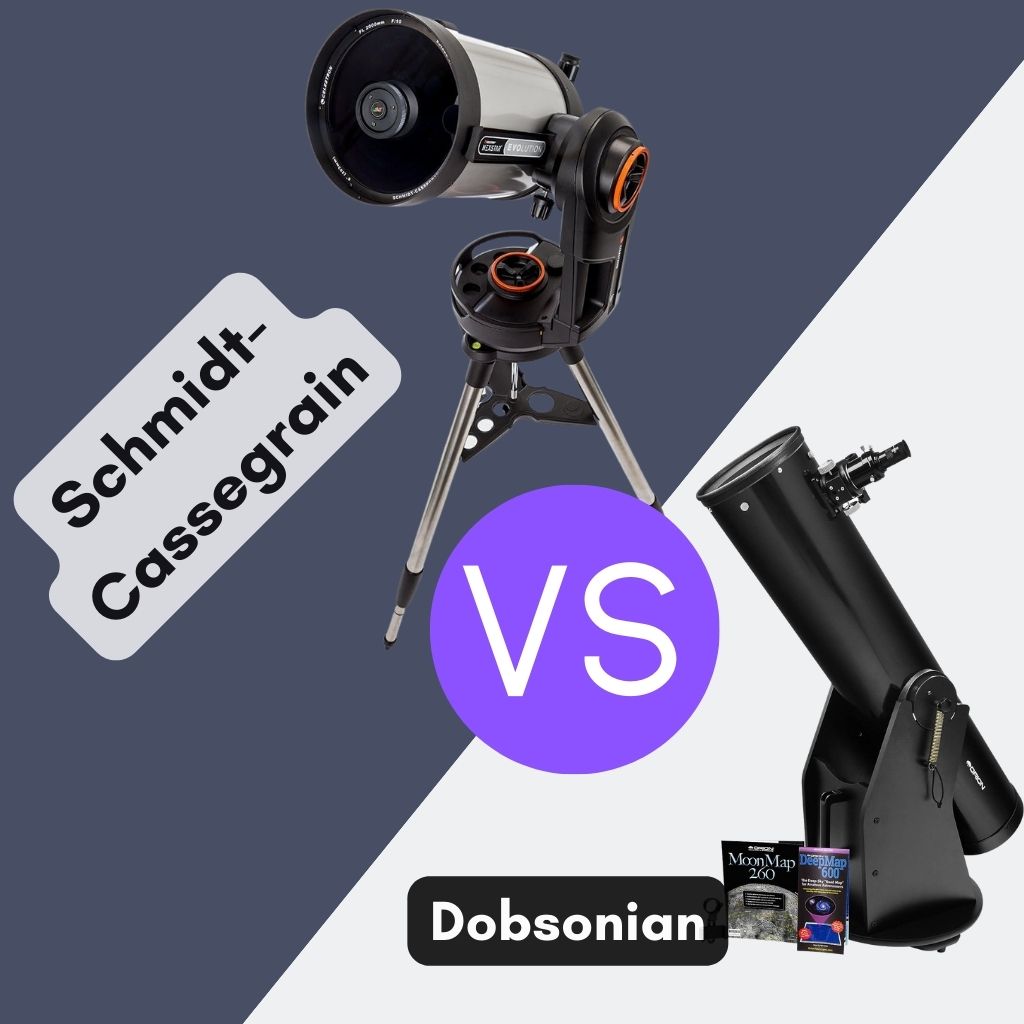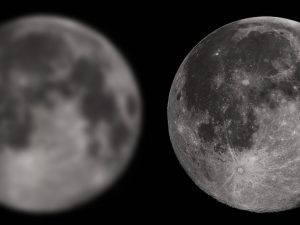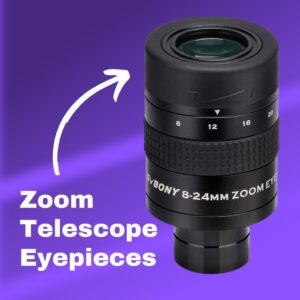This site contains affiliate links to products. I may receive a commission for purchases made through these links.
The choice between Schmidt-Cassegrain and the Dobsonian often becomes a crossroads. At the heart of their designs lies a battle between ingenuity, simplicity, and functionality.
The Schmidt-Cassegrain integrates the principles of refractor and reflector telescopes, using a combination of lenses and mirrors. This clever hybrid system offers a compact and versatile platform, with a corrector plate at the front to minimize optical aberrations.
On the other hand, the Dobsonian is often described as the “people’s telescope.” It ditches complexity for sheer simplicity and raw light-gathering power.
Eschewing intricate mechanisms, the Dobsonian is a reflector telescope mounted on an easy-to-use, altazimuth base.
In this post, we’ll delve deep into the realms of Schmidt-Cassegrain and Dobsonian telescopes, comparing their features, benefits, and potential drawbacks.
| Feature | Schmidt-Cassegrain | Dobsonian |
| Optical Design | Catadioptric (Refractor + Reflector) | Reflector (Typically Newtonian) |
| Light-Gathering Power | Efficient in a compact design | High due to larger apertures |
| Ease of Maintenance | Lower (Sealed tube design) | Higher (Open design & collimation) |
| Cost | Typically more expensive | More affordable for large apertures |
| Setup & Usability | Efficient and user-friendly | Extremely user-friendly |
| Portability Concerns | High portability due to compactness | Less portable due to large size |
| Optical Aberrations | Minimized due to corrector lens | May require collimation |
Dobsonian telescope vs Schmidt-Cassegrain Dobsonian: Brief overview
The Schmidt-Cassegrain is the epitome of versatility and compactness. It is catadioptric (or compound), which merges the benefits of refracting and reflecting designs. The Schmidt-Cassegrain offers clear and sharp imagery thanks to its front-end corrector plate.
Conversely, the Dobsonian is the embodiment of simplicity. Often regarded as the telescope for the masses, it maximizes light collection without unnecessary complexities.
Its intuitive altazimuth base ensures ease of use, and its design allows for larger apertures at more affordable prices.
While the Schmidt-Cassegrain thrives on innovation and adaptability, the Dobsonian prides itself on straightforwardness and raw observational power.
As we dive deeper, we’ll unpack the nuances of each, helping you discern which might be your telescope of choice.
Differences between a Schmidt-Cassegrain and Dobsonian
Choosing between a Schmidt-Cassegrain and a Dobsonian often boils down to specific needs and preferences.
Both telescope designs have unique attributes, and understanding their distinct features can guide one’s decision.
Here are the main differences that set the Schmidt-Cassegrain and Dobsonian telescopes apart:
Schmidt-Cassegrain has a Catadioptric optical design, while the Dobsonian has a reflector design
Optical design is a fundamental element in telescopes, dictating how they gather and focus light to provide views of celestial objects.
The Catadioptric system, often seen in many Schmidt-Cassegrain configurations, seamlessly combines elements from both refracting and reflecting telescopes.
A significant advantage of the catadioptric system is its ability to tackle chromatic aberration.
The Schmidt corrector plate at its forefront helps combat this issue commonly faced by pure-refracting telescopes.
On the other hand, a Dobsonian telescope is a type of reflecting telescope that primarily uses mirrors to collect and focus light.
The most common reflector design in Dobsonian telescopes is based on Newtonian reflectors. These systems employ a primary mirror at the telescope’s base to gather light and direct it toward a flat secondary mirror.
Schmidt Cassegrain is compact, while a Dobsonian is bulky
The Schmidt-Cassegrain shines as a compact astronomical instrument, often making it the preferred choice for those on the move or with limited space.
Its design optimizes the focal length within a shorter optical tube, making it proficient at capturing deep-sky objects without being unwieldy.
This telescope design is a testament to the evolution of compact and efficient optical tools.
However, the Dobsonian is recognized for its bulkier presence. Although its size allows it to have a longer focal length and gather more light from deep sky objects, this comes at the cost of portability.
Schmidt Cassegrain has a shorter focal length while the Dobsonian has a longer focal length
Light-gathering power, determined by a telescope’s focal length, plays a pivotal role in determining the sharpness, brightness, and magnification of celestial views.
Catadioptric telescopes, specifically in the Schmidt-Cassegrain design, typically adopt a shorter focal length.
This ensures they are compact and versatile yet provide a sharp focus, allowing for high magnification in a relatively small package.
In contrast, reflector telescopes, the Dobsonian models’ foundation, often have longer focal lengths. This design approach harnesses the combined power of a large primary mirror situated at the telescope’s base and a strategically placed flat secondary mirror.
Schmidt-Cassegrain telescope overview
Schmidt-Cassegrain telescopes, often abbreviated as SCTs, represent the zenith of catadioptric telescopes. These telescopes marry the essence of both refractors and reflectors, offering a blend of performance in a compact form.
The foundation laid by Bernhard Schmidt and innovations from James Gilbert Baker gave the world a telescope type embraced by novice and adept astronomers.
What is a Schmidt-Cassegrain best for?
The SCT is ideal for detailed planetary observations, capturing distant galaxies, and engaging in astrophotography.
Despite its longer focal length, its compact design also makes it a popular choice for mobile stargazing enthusiasts.
How a Schmidt-Cassegrain telescope works
A Schmidt-Cassegrain telescope is essentially a catadioptric telescope. The light first encounters the Schmidt corrector lens – a unique glass surface that reduces optical aberrations.
It then travels to the primary mirror, reflects onto the secondary mirror, and finally converges through the eyepiece, delivering a pristine image.
Features of a Schmidt-Cassegrain telescope
Here are the intricate features that define their brilliance:
Corrector lens
The presence of the corrector lens at the forefront of Schmidt-Cassegrain telescopes is pivotal.
It’s not merely about protection; this specially designed lens is instrumental in ensuring minimized optical aberrations and distortions, offering clearer views of celestial objects.
Adaptability
As representatives of the catadioptric telescope family, Schmidt-Cassegrain telescopes are known for their versatility. Their design is conducive to pairing with various accessories, making them ideal for astronomers looking to customize their observational toolkits.
Compactness
One of the distinguishing features of Schmidt-Cassegrain telescopes is their ability to encompass a long focal length within a compact frame.
This design aids in providing detailed celestial views and ensures the telescope remains user-friendly in terms of handling and storage.
Advantages of a Schmidt-Cassegrain telescope
While boasting an array of benefits, the following stand out when it comes to Schmidt-Cassegrain’s allure:
All-rounder capabilities
Schmidt-Cassegrain telescopes have earned their reputation as versatile optical devices.
Whether you are keen on observing distant galaxies or studying planetary details, these telescopes are equipped to handle both with ease, ensuring a comprehensive stargazing experience.
Ease of maintenance
Maintenance often deters potential telescope owners. However, with their sealed tube design, Schmidt-Cassegrain telescopes alleviate such concerns.
The closed system effectively keeps environmental contaminants like dust and moisture at bay, ensuring the longevity of the optical components.
Portability
While long focal lengths often imply bulkier designs, Schmidt-Cassegrain telescopes defy this convention.
Their compactness, coupled with their long focal lengths, makes them an ideal companion for astronomers on the move, ensuring that quality observations aren’t compromised for the sake of portability.
Limitations of a Schmidt-Cassegrain telescope
Like all things, Schmidt-Cassegrain telescopes have their challenges; the following are some noteworthy concerns:
High-cost
Quality often comes at a price. Compared to their Newtonian counterparts, Schmidt-Cassegrain telescopes typically demand a heftier investment.
Acclimatization concerns
Given their design and materials, Schmidt-Cassegrain telescopes sometimes require additional time to acclimate to ambient temperatures.
This can mean a longer waiting period before optimal observations, especially during significant temperature fluctuations.
Best Schmidt-Cassegrains
The Schmidt-Cassegrain telescope, an adaptable and compact marvel, continues to be a favorite choice for many stargazers.
Here are some top picks to consider:
Celestron NexStar Evolution Computerized Telescope
The Celestron NexStar Evolution Computerized Telescope has a 203-millimeter objective lens and a Plossl eyepiece that offers clear and vivid imagery of the cosmos.
Its altazimuth mount guarantees stability, while its superior tracking makes astroimaging a breeze. One of its distinctive features is its ability to connect to devices using its built-in wireless network.
This makes navigation intuitive with the Celestron mobile app, available for iOS and Android.
A notable convenience is the built-in battery, freeing users from the hassles of external power sources.
Celestron Advanced VX 6″ Schmidt-Cassegrain Telescope
The Celestron Advanced VX 6″ Schmidt-Cassegrain Telescope is a commendable mid-range telescope equipped with a 150-millimeter objective lens. Its Plossl eyepiece ensures clear celestial views.
The telescope sits atop an equatorial mount, facilitating precise tracking of objects across the night sky.
Its manual focus provides hands-on control, while the StarBright XLT lens coating enhances light transmission.
It also features a reflex finderscope that aids in easily locating and centering objects.
Celestron CGEM II 800 EdgeHD 8“ Schmidt-Cassegrain Telescope
The Celestron CGEM II 800 EdgeHD 8″ Schmidt-Cassegrain Telescope features a powerful 203-millimeter objective lens coupled with a Barlow eyepiece. These allow it to deliver crisp images.
Its equatorial mount offers precise tracking, making it ideal for extended observations and astrophotography.
The telescope boasts over 800 times the light-gathering power compared to the naked eye, ensuring exceptional detail.
The cooling vents on the rear cell aid in faster cooling and adaptability to ambient temperatures.
Like the Advanced VX, this model employs the StarBright XLT lens coating and features a reflex finderscope for easier object location.
Dobsonian telescope overview
Dobsonian telescopes, a favorite among newcomers and seasoned stargazers, are a special subset of reflector telescopes.
Pioneered by John Dobson, they’ve carved a niche for themselves with their unique design, ease of use, affordability, and performance.
What is a Dobsonian telescope best for?
Given their large apertures and straightforward design, Dobsonian telescopes shine brightest when used for deep-sky observations. They’re particularly adept at revealing nebulae, galaxies, and star clusters in splendid detail.
How a Dobsonian telescope works
At its core, a Dobsonian telescope operates on the principles of the Newtonian telescope. Light enters the tube, striking the primary mirror situated at the base.
This primary mirror then reflects the light to the secondary mirror, angled to redirect this light to the eyepiece, providing the viewer with a magnified image of the distant cosmos.
Features of a Dobsonian telescope
Here are the distinctive attributes that solidify the Dobsonian telescope’s reputation:
Simplicity in design
From novices to experts, anyone can quickly grasp the operational basics of Dobsonian telescopes. Their minimalist approach emphasizes functionality over frills.
It ensures you can delve right into their celestial pursuits without being bogged down by intricate configurations.
Dobsonian mount
The altazimuth mount, commonly known as the Dobsonian mount, offers stability and ease. It allows users to manually track celestial objects across the sky with smooth, sweeping movements.
While it lacks the complexities of equatorial mounts, its intuitive operation often wins the day for many amateur astronomers.
Generous aperture
Dobsonians are renowned for offering larger apertures at affordable prices. This generous aperture ensures that even dim celestial objects, like distant galaxies and nebulae, are rendered more clearly and detailed.
Advantages of a Dobsonian telescope
The Dobsonian’s appeal lies in several key strengths, and the following encapsulate its primary attractions:
Cost-efficiency
Dobsonians offer the benefits of large apertures – essential for detailed observations – without the hefty price tags often associated with other high-end telescopes.
They often emerge as the go-to choice for budding astronomers working with a budget.
Swift setup and observation
The time you spend assembling and configuring a telescope can sometimes deter you, especially if you are a beginner. Dobsonians eliminate such barriers with their plug-and-play nature, ensuring you can transition from setup to stargazing in minutes.
User-centric operation
The Dobsonian mount has a user-friendly design with a manual or motorized operation that allows even those unfamiliar with telescopes to track celestial bodies easily. This ease of use often translates to longer observation sessions and heightened enjoyment.
Limitations of a Dobsonian telescope
Despite its prowess, there are certain limitations intrinsic to Dobsonians; they include:
Bulky build
While the larger aperture is an advantage in observation, it also implies a bulkier build. Transporting larger Dobsonian telescopes can be challenging, making them less ideal for those wishing to stargaze from varying locations.
Maintenance
Being reflector telescopes, Dobsonians have mirrors that, over time, might need realignment or collimation. Furthermore, open designs, unlike sealed ones, can attract dust, necessitating periodic cleaning to maintain optimal viewing experiences.
Best Dobsonian telescopes
Renowned for their simplicity and substantial light-gathering power, Dobsonian telescopes have cemented their place in the heart of many astronomy enthusiasts. The following are some of the best models in the market:
Orion SkyQuest XT8 Classic Dobsonian Telescope
The Orion SkyQuest XT8 Classic Dobsonian Telescope has an impressive 203mm objective lens diameter, combined with the precision 8-inch diameter parabolic primary mirror. This makes it perfect for inspecting the moon and planets like Jupiter, Saturn, and Mars in fine detail.
Its 8-inch aperture is designed to capture substantial light, offering vivid views of star clusters, nebulae, and distant galaxies.
It comes with a 1.25” 25mm Plossl eyepiece, a smartphone photo adapter, and a reflex finderscope to enhance your stargazing.
The telescope is fitted onto a robust Altazimuth mount and features a manual focus. Its 46″ long enameled steel optical tube effortlessly glides on the Dobsonian base.
This telescope stands out for those wanting an in-depth look into our solar system and deep space.
Read the complete review: Orion SkyQuest XT8 Review (#1 Beginner Telescope)
Sky-Watcher Heritage 130mm Tabletop Dobsonian Telescope
The Sky-Watcher Heritage 130mm Tabletop Dobsonian Telescope is a top pick for a blend of power and compactness. It offers a 130mm objective lens diameter and comes with both 25mm 1.25″ and 10mm 1.25″ eyepieces.
What makes it especially appealing for urban astronomers or those in light-polluted areas is its ability to present clear images without needing a vast setup space.
It is mounted on an Altazimuth base and equipped with autofocus, ensuring sharp celestial views are always at your fingertips. The reflex finderscope aids in pinpointing stars and other celestial bodies.
Read the full review: Sky-Watcher Heritage 130P Review (Read Before Purchase!)
Celestron 76mm Cometron FirstScope
The Celestron 76mm Cometron FirstScope has a 76mm objective lens diameter and is perfect for exploring the moon’s terrains, observing nearby planets, or introducing oneself to the starry expanse.
This telescope is packed with a Kellner eyepiece lens, two 20mm and 10mm eyepieces, and a multi-coated lens to ensure optimum clarity. It comes with a reflex finderscope that helps beginners navigate the night sky, and the manual focus gives a hands-on experience.
The altazimuth mount guarantees stability as you traverse the universe. This FirstScope is ideal for newcomers to astronomy, ensuring their first steps are both enlightening and awe-inspiring.
You may also like: 10 Best Dobsonian Telescopes (Ranked!)
Schmidt-Cassegrain vs. Dobsonian telescopes, which one’s for me?
The Schmidt-Cassegrain and Dobsonian telescopes have unique strengths tailored to different astronomical needs.
If you seek versatility, adaptability, and a compact design for planetary observations, distant galaxies, or astrophotography, a Schmidt-Cassegrain is a suitable choice.
On the other hand, if sheer simplicity, larger apertures for deep-sky observations, and cost-effectiveness are your priorities, then a Dobsonian would be a stellar choice.
Ultimately, choosing a telescope should align with your observing preferences, portability needs, and budget.
Takeaway: Schmidt-Cassegrain and Dobsonian telescopes present excellent choices for celestial observations
The choice between a Schmidt-Cassegrain and a Dobsonian is not just a matter of preference but a decision that hinges on individual needs and astronomical aspirations.
Both designs offer unique advantages that cater to different levels of expertise and observing goals. The Schmidt-Cassegrain’s compact versatility and excellent astrophotography capabilities make it a favorite for many, while the Dobsonian’s simplicity and cost-effectiveness attract those seeking a straightforward and immersive stargazing experience.
So whether you opt for the precision of the Schmidt-Cassegrain or the simplicity of the Dobsonian, both telescopes offer their own distinct path to celestial observation.
See also:










